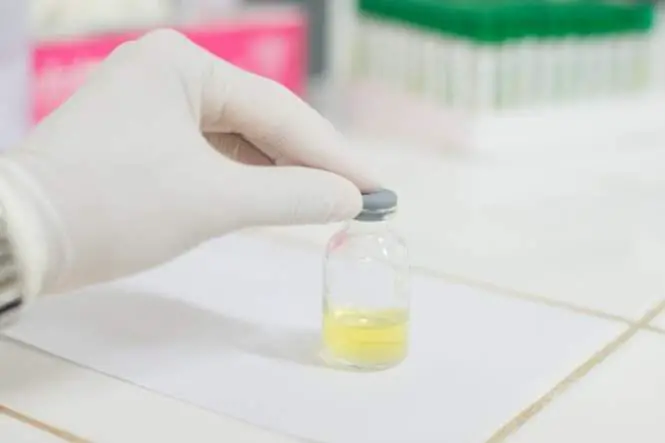There are many different types of bodily fluid that are secreted by the body and are also present within the body at any given time. These fluids may be useful in helping forensic scientists and pathologists put together a detailed picture of how an individual died and likewise may also present means of identifying the perpetrator.
Types of Bodily Fluid
Bodily fluids are broken down into two categories: excreted and secreted. Within these categories you will find the following:
- Excreted: Sweat, Breast Milk, Cerumen (Earwax), Faeces (included because faeces are often covered in a mucus membrane to enable travelling through the bowel), Chyme (found in the stomach), Bile, Vomit, Aqueous Humour (a watery substance that covers the eye), Sebum (Skin Oil)
- Secreted: Cowper’s Fluid (Pre-ejaculatory fluid), Blood or Plasma, Semen, Saliva, Female Ejaculate, Serum, or Urine.
Bodily Fluids as Evidence
These varying fluids are to be found contained within the human body and those that are classed as being secreted can be found on or about the body of an individual who has been the victim of a crime.
The most common bodily fluids to be found in these instances are blood, semen, serum, saliva and sometimes – given the severity of the crime – urine or faeces. It is the job of the forensic scientist or Scene of Crime Officer (SOCO) to establish if any of these bodily fluids are present at a crime scene and take the necessary steps to ensure that they are collected.
These fluids – if detected at a crime scene – are swabbed, bagged and collected in vials, which are air tight and at low risk of cross contamination.
In addition, the use of chemicals and ultra violet light can be deployed to uncover the existence of any of these fluids in circumstances where they might be overlooked. Particularly if the crime scene is a darkly lit area or an outdoor area which covers considerable distance.
Also useful to note is the fact that not all bodily fluids contain sufficient information to gain a DNA comparison. This happens when the individual is what is described as a ‘non-secretor’. A ‘non-secretor’ will not have sufficient levels of protein in their bodily fluids to determine a match between blood and bodily fluids found at a crime scene. Of course the percentage of ‘non-secretors’ among the populous as opposed to ‘secretors’ is very small indeed.
Another important factor when dealing with a crime scene that may have bodily fluids secreted is that all personnel must be fully clothed in protective clothing to avoid both contamination of the crime scene and potential exposure to blood-borne diseases that may be passed to them via cuts, scrapes and/or ingestion.
Again it is worth considering the risks of infection to all concerned and also looking at how crime scene evidence is collected; without proper quarantine procedures evidence that might be vital to the success of any criminal investigation could – and has on occasion – been inadvertently cross contaminated by the person or persons handling its collection and transportation. Of course these instances are rare but it is vital that every care is taken to ensure that this is not the case.
As well as bodily fluids the forensic scientist – and/or Scenes of Crime Officer (SOCO) will look for trace evidence such as skin particles, hairs, fingernails and anything else that might have been in contact with an attacker or assailant.


